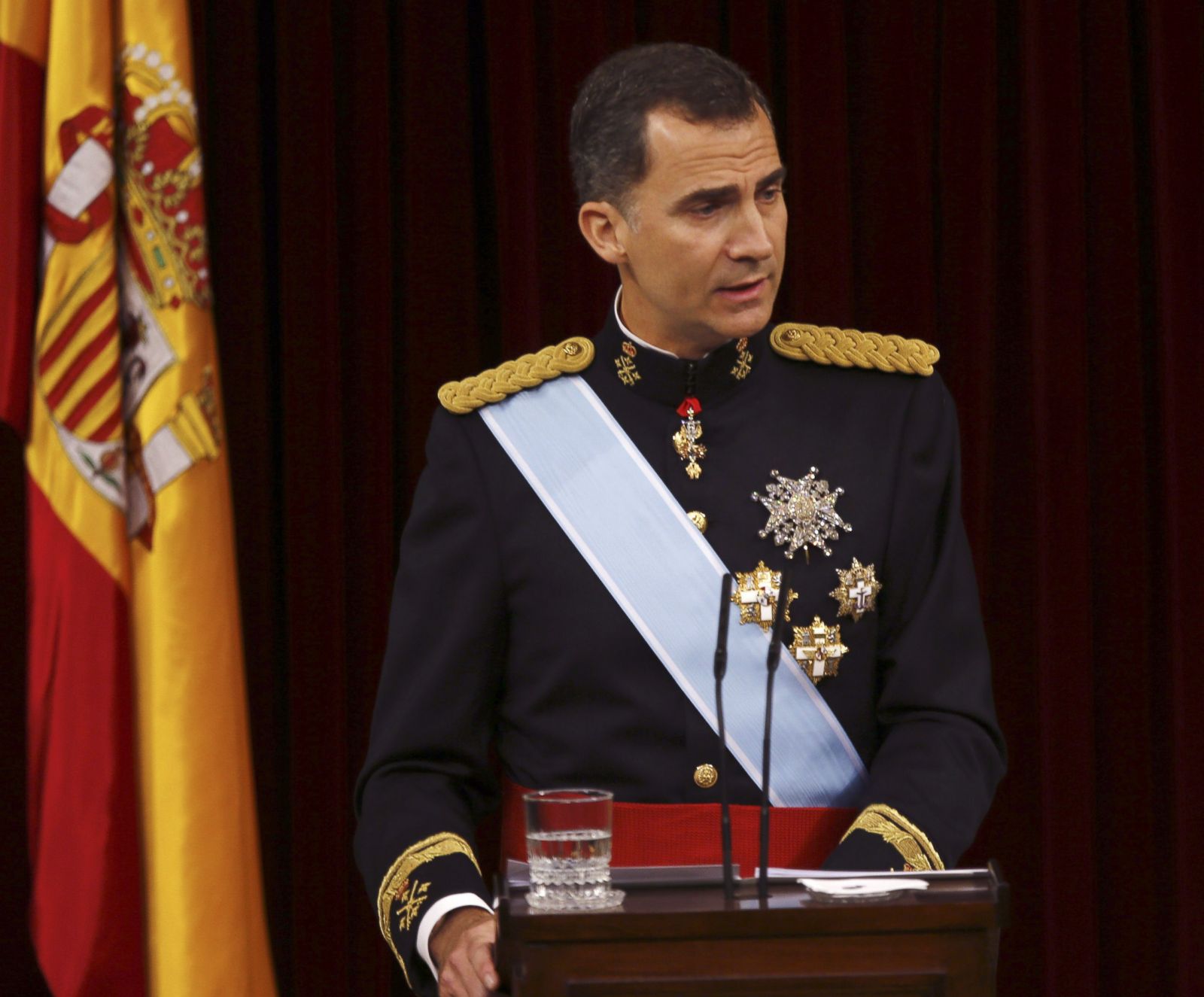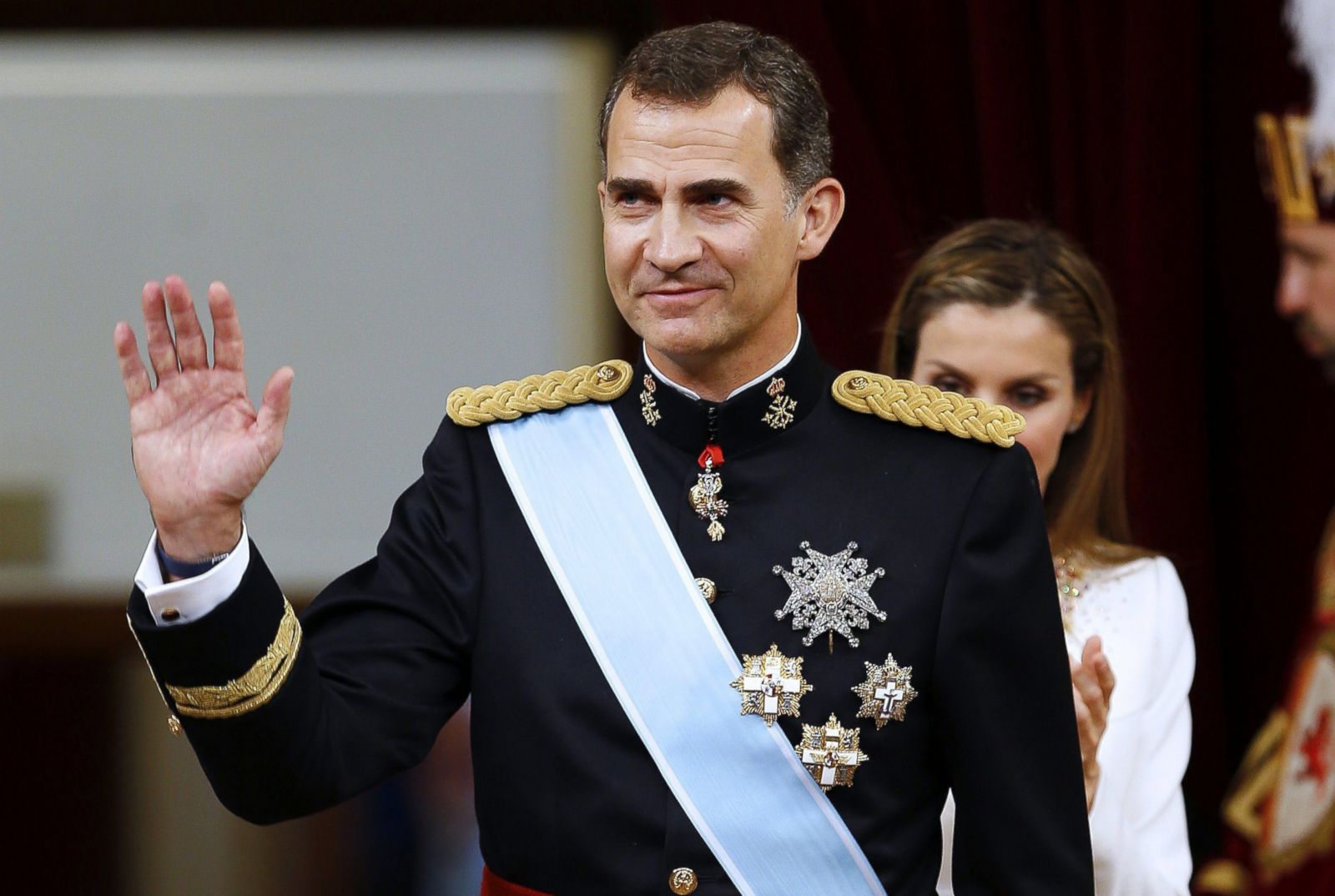Biography and Reign of King Felipe VI

King Felipe VI, the current monarch of Spain, has reigned since 2014. His journey to the throne and his reign have been marked by significant events and a commitment to modernizing the Spanish monarchy.
Felipe VI was born in Madrid in 1968 to King Juan Carlos I and Queen Sofía. He received his education in Spain and abroad, studying law and economics. He also completed military training and served in the Spanish Armed Forces. In 2004, he married Letizia Ortiz Rocasolano, a former journalist.
In 2014, King Juan Carlos I abdicated the throne, and Felipe VI ascended to the throne. His coronation ceremony was held in Madrid and was attended by representatives from around the world. Since becoming King, Felipe VI has focused on modernizing the monarchy and making it more relevant to the Spanish people. He has introduced reforms to increase transparency and accountability, and he has worked to strengthen the monarchy’s role as a symbol of unity and stability.
Felipe VI has also played a key role in Spain’s response to the COVID-19 pandemic. He has made public appearances to express his support for the Spanish people and has called for unity and solidarity during these challenging times.
Education and Military Service, King of spain
Felipe VI received his primary and secondary education at Santa María de los Rosales School in Madrid. He then went on to study law at the Autonomous University of Madrid and economics at the London School of Economics. In addition to his academic studies, Felipe VI also completed military training at the General Military Academy in Zaragoza and served in the Spanish Army, Navy, and Air Force.
Path to Becoming King
Felipe VI is the eldest child of King Juan Carlos I and Queen Sofía. He became heir to the throne in 1977 when his father was proclaimed King of Spain. In 2004, he married Letizia Ortiz Rocasolano, a former journalist. The couple has two daughters, Leonor, Princess of Asturias, and Infanta Sofía.
In 2014, King Juan Carlos I abdicated the throne, and Felipe VI ascended to the throne. His coronation ceremony was held in Madrid and was attended by representatives from around the world.
Role in Modernizing the Spanish Monarchy
Felipe VI has focused on modernizing the Spanish monarchy and making it more relevant to the Spanish people. He has introduced reforms to increase transparency and accountability, and he has worked to strengthen the monarchy’s role as a symbol of unity and stability.
One of the most significant reforms introduced by Felipe VI was the creation of a new transparency portal for the royal family. This portal provides information about the royal family’s activities, expenses, and assets. Felipe VI has also taken steps to reduce the size of the royal household and to make the monarchy more efficient.
In addition to his reforms, Felipe VI has also worked to strengthen the monarchy’s relationship with the Spanish people. He has made public appearances to express his support for the Spanish people and has called for unity and solidarity during challenging times.
Relationship with the Spanish People
Felipe VI is generally popular with the Spanish people. He is seen as a modern and progressive monarch who is committed to the well-being of his country. Felipe VI has also worked to strengthen the monarchy’s relationship with the Spanish people, and he has made public appearances to express his support for the Spanish people during challenging times.
Historical Significance of the Spanish Monarchy
King of spain – The Spanish monarchy is one of the oldest and most influential institutions in Europe. Its origins can be traced back to the Middle Ages, when the Iberian Peninsula was divided into a number of small kingdoms. Over time, these kingdoms were gradually unified under the rule of the Spanish monarchy, which played a central role in the exploration, colonization, and cultural development of the Americas.
Role in Spanish History, Culture, and Identity
The Spanish monarchy has been a major force in shaping Spanish history, culture, and identity. The monarchy has provided a sense of unity and continuity to the Spanish people, and it has played a key role in the development of Spanish language, literature, and art. The monarchy has also been a major patron of the arts and sciences, and it has helped to promote Spanish culture around the world.
Evolution of the Monarchy’s Power and Influence
The power and influence of the Spanish monarchy has evolved over time. In the Middle Ages, the monarchy was a powerful institution, with the king exercising absolute power. However, the power of the monarchy began to decline in the 19th century, as Spain became a constitutional monarchy. Today, the monarchy is a largely symbolic institution, with the king having limited political power.
Spain’s Royal Family and Culture: King Of Spain

The Spanish royal family, known as the House of Bourbon, is one of the oldest and most respected in Europe. The current monarch, King Felipe VI, is a direct descendant of the first Bourbon king of Spain, Philip V, who ascended to the throne in 1700. The royal family plays a significant role in Spanish society, serving as a symbol of national unity and tradition.
The royal family consists of King Felipe VI, Queen Letizia, and their two daughters, Leonor, Princess of Asturias, and Infanta Sofía. The family resides in the Royal Palace of Madrid, which is one of the largest and most opulent palaces in Europe. The royal family also has several other residences throughout Spain, including the Palace of Zarzuela, which is located on the outskirts of Madrid.
The royal family has a number of important traditions and customs. One of the most important is the annual Christmas Eve speech, which is broadcast to the nation on television. In his speech, the king reflects on the past year and offers his hopes for the future. The royal family also attends a number of official events throughout the year, including the opening of parliament and the presentation of the Nobel Prizes.
Role of the Royal Family in Spanish Society
The royal family plays a significant role in Spanish society. The king is the head of state and commander-in-chief of the armed forces. He also has the power to dissolve parliament and call for new elections. The queen is the king’s consort and has no official role in government. However, she is a strong advocate for social causes and is often seen as a role model for women.
The royal family is also a major tourist attraction. The Royal Palace of Madrid is one of the most popular tourist destinations in Spain, and the royal family’s official events are often attended by large crowds of people. The royal family’s popularity is due in part to their strong sense of duty and their commitment to the Spanish people.
Relationship between the Royal Family and the Spanish People
The relationship between the royal family and the Spanish people is generally positive. The royal family is seen as a symbol of national unity and tradition, and the king is respected as the head of state. However, there have been some periods of tension between the royal family and the people. For example, in the 1930s, King Alfonso XIII was forced to abdicate after a failed coup attempt. The monarchy was restored in 1975, but it has not always been popular with the Spanish people.
Despite these periods of tension, the royal family remains a popular institution in Spain. The king and queen are seen as hard-working and dedicated to their country, and they are generally well-respected by the Spanish people.
As the sun sets over the Iberian Peninsula, the king of Spain sits upon his throne, a symbol of centuries-old tradition and power. His reign is marked by both grandeur and responsibility, as he guides his nation through the challenges and triumphs of the modern era.
The crown he wears is a reminder of the rich history of Spain, a testament to the strength and resilience of its people.
In the tapestry of history, the King of Spain’s reign was marked by both splendor and intrigue. His court was a hub of political machinations and cultural exchange, attracting luminaries like Robert F. Kennedy Jr. , a renowned environmental activist who championed the cause of indigenous peoples.
Kennedy’s advocacy for the rights of the oppressed resonated with the King, who sought to balance tradition with the winds of change sweeping across his realm.